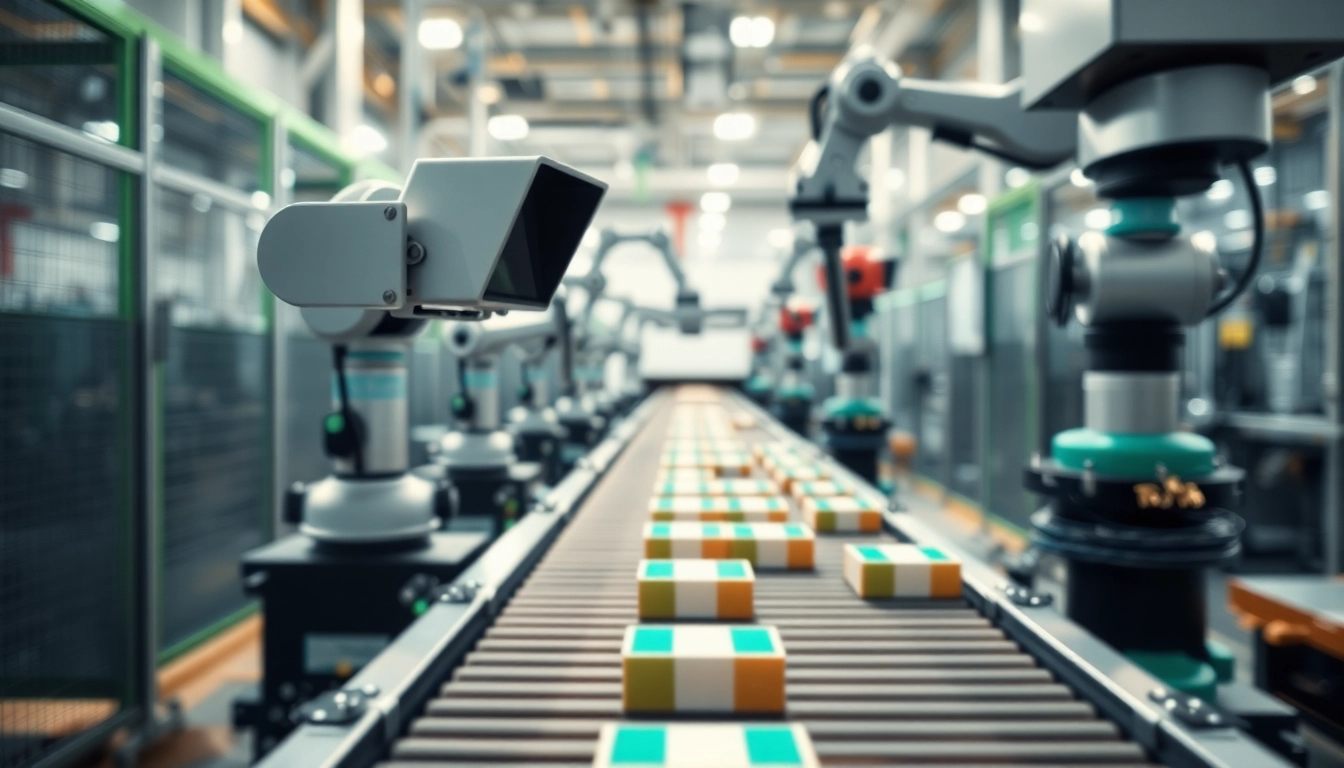Understanding Machine Vision
In today’s manufacturing landscape, the integration of advanced technology is essential for staying competitive. One of the standout technologies is machine vision, which enables systems to automate visual inspections, making processes faster, more efficient, and more reliable. This article delves into what machine vision is, how it operates, its various applications across industries, and the numerous benefits it offers to organizations.
Definition and Components of Machine Vision
Machine vision can be broadly defined as the technology and methods used to provide imaging-based automatic inspection and analysis for various applications. This technology typically combines a camera, lighting, processing hardware, and software algorithms to interpret and analyze visual information with precision.
The key components of a machine vision system include:
- Cameras: These capture visual data from the environment targeted for inspection.
- Lighting: Proper illumination is crucial to ensure that the camera perceives accurate details of the subject being examined.
- Processing Unit: Equipped with software algorithms, this unit performs image analysis and interpretation, often involving complex calculations to achieve reliable results.
- Output Devices: These deliver the processed information in a usable format, which could be visual displays, alarms, or automated instructions for machinery.
How Machine Vision Works
The operation of machine vision systems can be broken down into several essential steps:
- Image Acquisition: The system captures images or video streams of the target. This process depends on the type of camera and lighting used, as well as the environmental conditions.
- Image Processing: The captured images are processed using various algorithms. This step may involve filtering, edge detection, pattern recognition, and more to extract relevant features.
- Analysis: The processed data is analyzed to detect defects, measure dimensions, or recognize specific patterns based on predefined criteria.
- Decision-Making: After analysis, the system provides outputs that inform operators or directly control subsequent processes in the production line.
Applications in Various Industries
Machine vision is employed across many sectors with an array of applications:
- Manufacturing: Used for quality control, product identification, and ensuring compliance with manufacturing standards.
- Pharmaceuticals: Assists in inspecting labels, packaging integrity, and ensuring dosage accuracy.
- Aerospace: Involved in detecting surface defects in components and parts critical for safety.
- Automotive: Utilized for inspection in assembly lines, performing checks on assembly consistency and detecting faults.
- Food Industry: Helps in monitoring packaging integrity, labeling, and quality of products.
Benefits of Implementing Machine Vision
Enhancing Quality Control
One of the primary benefits of machine vision is its ability to enhance quality control processes. By automating visual inspections, manufacturers can achieve consistent quality assurance, decrease human error, and maintain rigorous standards throughout the manufacturing process.
Reducing Operational Costs
Integrating machine vision can significantly lower operational costs by minimizing waste associated with defective products. With precise inspection capabilities, businesses can identify issues before they escalate, which results in reduced rework costs and improved resource allocation.
Increasing Efficiency and Accuracy
Machine vision systems work at a speed and accuracy level that far exceeds human capabilities. This increased efficiency means production lines can operate longer and with fewer interruptions, leading to higher output rates while also ensuring that accuracy remains uncompromised.
Machine Vision vs Computer Vision
Key Differences Explained
While often confused, machine vision and computer vision are distinct fields. Machine vision specifically implements hardware to automate inspection and measurement tasks, often in industrial settings. In contrast, computer vision encompasses a broader range of visual perception applications, including image recognition and facial detection but may not always involve real-time automation.
Technology Overlaps and Intersections
Despite their differences, machine vision and computer vision share common technologies such as imaging sensors and algorithms. Both fields leverage advancements in artificial intelligence and deep learning, particularly in improving recognition and classification accuracy.
Industry Case Studies
Several case studies illustrate how various industries successfully implement machine vision:
- Aerospace Manufacturer: A company in the aerospace sector adopted machine vision systems for inspection of complex component shapes. The result was a 25% reduction in inspection time and improved defect detection rates.
- Food Processing Facility: Through the use of machine vision in product quality checks, a food processing plant was able to minimize product recalls due to packaging errors by 35%.
Best Practices for Machine Vision Systems
Choosing the Right Equipment
Selecting appropriate hardware is critical for successful machine vision implementation. Factors to consider include resolution, frame rate, and lens types, all of which should align with the specific requirements of the application.
Implementation Strategies
Developing a robust implementation plan involves defining objectives, selecting the technology that meets program needs, and prioritizing training for staff. User-friendly interfaces and ongoing education can improve outcomes and empower teams.
Monitoring and Maintenance
Maintenance is vital for optimal performance in machine vision systems. Regularly scheduled maintenance checks for camera calibration, lighting adjustment, and software updates should be part of a comprehensive strategy to prevent failures and ensure continued accuracy.
The Future of Machine Vision
Emerging Technologies
The future of machine vision will likely see continued integration with artificial intelligence and machine learning, allowing systems to learn from previous inspections and improve autonomously. Innovations in sensors and optics are also anticipated to enhance image quality and processing capabilities.
Adaptation to Market Trends
Market trends leaning towards automation and smart manufacturing will spur growth in machine vision applications. Industries will benefit from implementing adaptable systems capable of responding to varied production demands and maintaining efficiency.
Predicting Industry Changes
As manufacturers increasingly adopt Industry 4.0 practices, machine vision systems will evolve to communicate seamlessly with other technologies such as Internet of Things (IoT) devices, further enhancing capabilities and operational intelligence.
